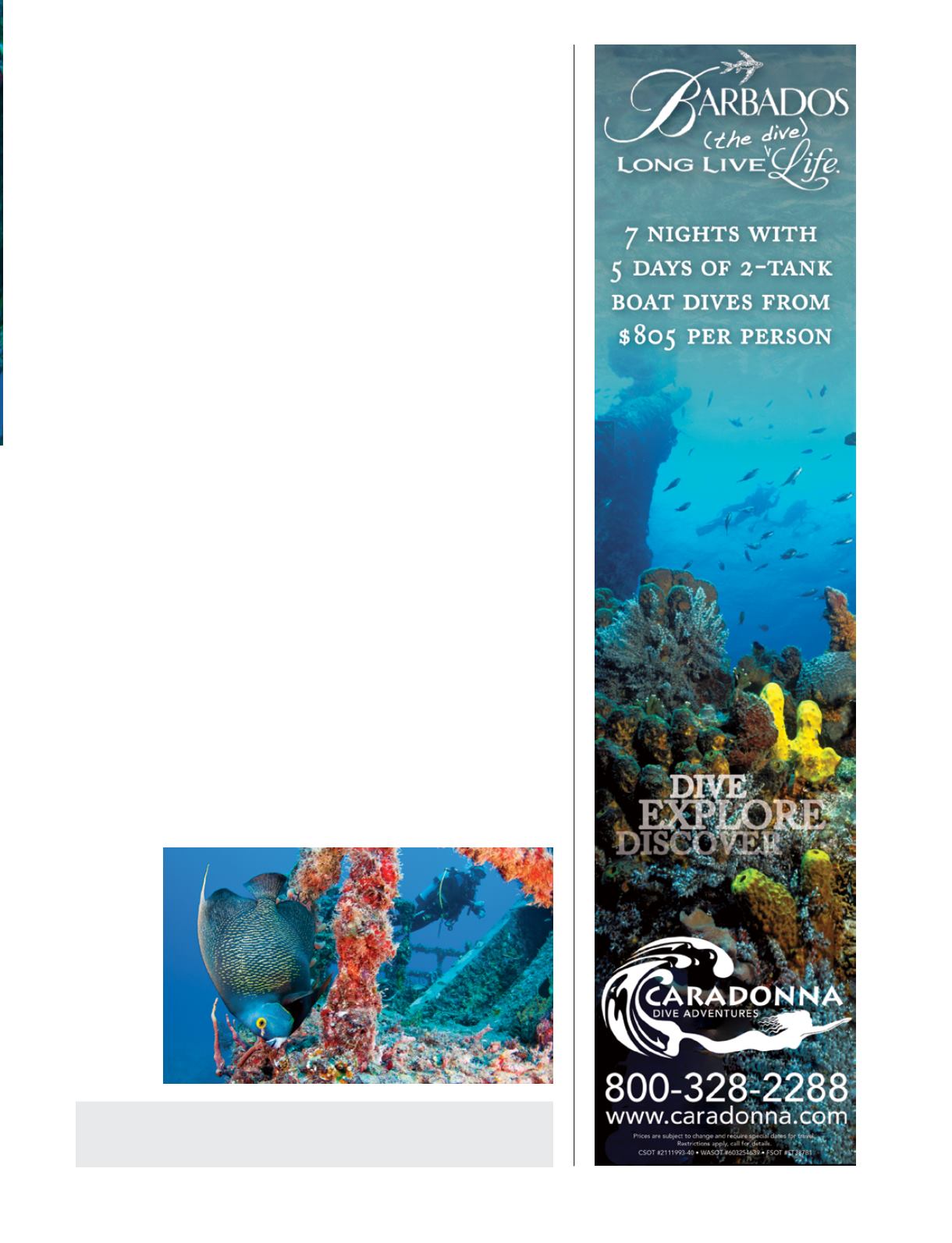
of fish have been documented on the wreck including commonly seen
bluehead wrasses, bar jacks and great barracudas, as well as more rarely
spotted longlure frogfish and unicorn filefish. Federally protected goliath
grouper and large cubera snapper are becoming ever more common.
REEF was also tasked with determining how native fish assemblages on
nearby natural reefs respond to such a massive structure being situated just
a few hundred yards away. Previous studies on smaller artificial structures
demonstrated that such structures may aggregate fish from surrounding
areas. This is significant in terms of marine-life management, for if fish are
spread out in low densities over a large area they may be harder to catch.
Consolidated on a wreck, however, they may be easier to catch and thus
be lost in greater numbers. While marine life in the Upper Keys has been
protected from spearing for decades, hook-and-line angling is permitted
on this wreck, and therefore fish are vulnerable. Yet REEF data suggests
that the Spiegel Grove actually provides a net increase in fish abundance
without significant migration away from nearby natural reefs.
One reason for the increase may be the sheer size and complexity
of the wreck, which provides habitat that may be more hospitable for
some species than the surrounding natural reef. Another unintended
consequence working in favor of abundant marine life may be the fact that
so many divers use the wreck that it’s difficult for fishermen to find an
open space to drop a line. With eight mooring buoys running the length
of the wreck and estimates of tens of thousands of divers visiting the site
each year, its sheer popularity may be establishing it as a de facto marine
protected area.
Key Largo is no stranger to ships as artificial reefs. Since the time of the
Spanish exploration, countless ships have grounded and sunk in the Florida
Keys. More recently, in 1987 the U.S. Coast Guard cutters Bibb and Duane
were intentionally placed as dive sites. The Duane, which sits upright like
the Spiegel Grove, has been down for nearly 30 years, and the World War
II casualty Benwood has been down since 1942. Each hosts large schools of
fish, diverse macro life and colorful sponges. The assemblages of marine
life at these wrecks are much more complex and mature than the 11-year-
old assemblage on the Spiegel Grove. But the currents sweeping the Spiegel
Grove have brought about rapid colonization of algae, sponges, corals and
gorgonians. The chain of life is already well established on this reef of steel.
— Lad Akins
|
23
For more information on the fish found on the Spiegel Grove, visit
geo/TWA/34030038/ or view the five-year report at
SpiegelGrove_5year_report.pdf.
Tim Grollimund
The French
angelfish is
one of many
species of reef
tropicals that
makes its home
on the massive
shipwreck.


